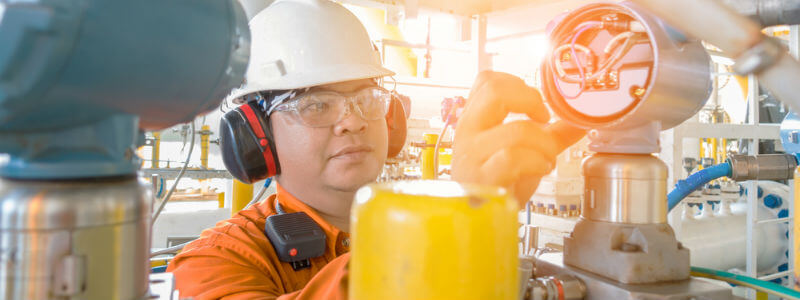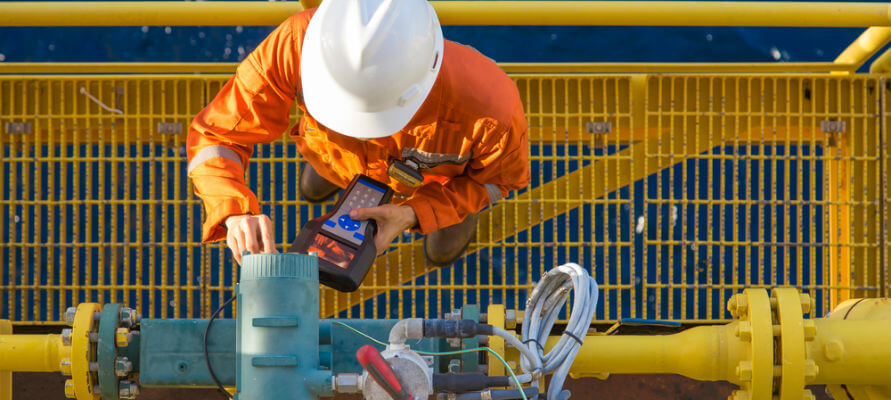
How Does a Natural Gas Flow Meter Work?
Natural gas flow meters measure the amount of gas flowing through a pipeline. The working principle involves detecting the gas flow and converting this information into readable data, often via electronic signals. The meters use various technologies to achieve this, each with its unique detection and measurement method.
For instance, some meters measure the pressure differential across a constriction, while others detect the speed of gas flow using mechanical or ultrasonic sensors. The choice of technology depends on the application’s specific requirements, such as the range of flow rates, accuracy needed, and the physical properties of the gas.
Understanding Natural Gas Flow Measurement
The measurement of natural gas flow is a complex process that requires precision and accuracy due to the variable nature of the gas. Understanding natural gas flow measurement involves considering natural gas properties, such as its compressibility, temperature, pressure, and impurities or moisture. Accurate measurement is crucial for various reasons, including financial accounting, safety, and regulatory compliance.
Importance in Various Industries
Natural gas flow meters are essential in a variety of sectors. In the energy industry, they are crucial for managing the supply and distribution of natural gas, directly impacting energy production and supply chain efficiency. In manufacturing, these meters help in process control, ensuring that natural gas is used effectively and safely as a fuel or a raw material. In the utilities sector, accurate gas flow measurement is key for billing purposes and to meet regulatory standards. This ensures that customers are charged correctly for their gas usage and that the utility companies comply with legal requirements.
Factors Influencing the Selection of Flow Meter Technology
Several technical and environmental factors influence the choice of a natural gas flow meter. Gas composition can affect the meter’s accuracy and suitability, as different compositions may require different measurement technologies. Flow rate is another critical factor; some meters work better at low flow rates, while others are more accurate at high flow rates. Environmental conditions like moisture or corrosive elements can also affect the choice.
Additionally, the required level of accuracy and the meter’s maintenance needs are important considerations. High-precision applications require more sophisticated and expensive meters, while rugged and low-maintenance options are preferable in remote or harsh environments.

Natural Gas Flow Meters
Natural gas flow meters are sophisticated devices designed to measure the flow of natural gas through pipelines. These types of flow meters are critical for accurate billing, system efficiency, and compliance with safety and regulatory standards. They are commonly found in industrial settings, such as power plants, manufacturing facilities, and municipal utility services.
The measurement process involves detecting the quantity of gas, either by volume or mass. This requires precision engineering to ensure accuracy under varying pressure and temperature conditions. The meters typically consist of a sensing element and a transducer, which convert the physical flow into an electronic signal.
Working Principles
Natural gas flow meters operate on the principle of measuring the quantity of gas passing through a pipeline. They achieve this by calculating the flow rate, which is a function of the gas’s velocity and the cross-sectional area of the pipe. This calculation often involves sophisticated algorithms that take into account the dynamic properties of natural gas, which can vary based on temperature, pressure, and fluid composition.
Key Components
The following are some of the most important components of a natural gas flow meter. These components work in unison to ensure precise detection and measurement of natural gas flow.
- Electronic Sensors: Responsible for detecting the flow and properties of natural gas.
- Transmitters: Responsible for converting sensor signals into readable data.
- Mechanical Parts: In some meters, like turbine flow meters, mechanical components such as rotors are used to measure the flow based on the mechanical movement.
- Display/Output Interface: For visualizing the data collected.
- Processing Unit: Computes the flow rate from the raw data provided by sensors.
Installation
Proper installation is key for the accuracy and longevity of a flow meter.
Key considerations include:
- Location: Choosing a spot free from vibrations and external disturbances.
- Orientation: Aligning the meter correctly with the flow direction.
- Pipeline Integration: Ensuring compatibility with existing pipeline configurations.
- Calibration: Adjusting the meter to measure accurately under local conditions.
Types of Natural Gas Flow Meters
The right choice of a flow meter for natural gas depends on the specific needs and constraints of the application, including accuracy requirements, gas properties, and environmental conditions.
The following are some common types:
- Differential Pressure Flow Meters: These meters create a pressure drop across a constriction and measure the difference to calculate flow rate.
- Turbine Flow Meters: These meters incorporate a freely rotating turbine wheel, with flow rate proportional to the rotational speed.
- Ultrasonic Flow Meters: Utilizing ultrasonic waves, these meters can measure flow rate by analyzing the change in frequency or transit time of the waves as they pass through the gas.
- Coriolis Flow Meters: These meters measure mass flow rate by observing changes in vibration frequency or phase shift in oscillating tubes caused by the Coriolis effect.
- Mass Flow Meters: Often used in precise applications, these meters measure the mass of gas directly, usually through thermal conductivity or Coriolis principle.
Discover IFS/DXP’s Oil and Gas Process Systems
Understanding the working principles and types of natural gas flow meters is crucial for selecting the most suitable one for a given application. This selection impacts the accuracy, efficiency, and safety of natural gas handling and management in various industries. IFS/DXP, with its focus on modular, engineered-to-order process skids, including fuel gas conditioning systems and LACT skids, provides efficient, adaptable, and cost-effective process technologies for the oil and gas industry.
Contact us today for more information.

